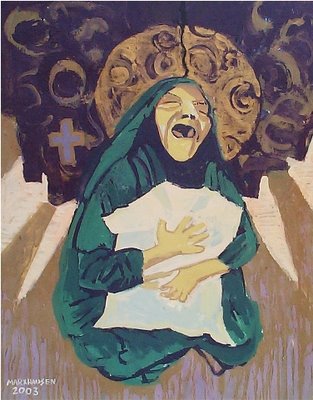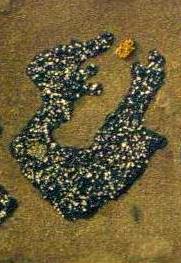In his book Superforce (1982) Davies talked about four constants. He concluded that all that exists is made possible by way of these four constants. His words are like poetry to me. The closest vision I have to the known universe is at my feet. Asphalt, embedded gravel, and the particulate that is revealed by deterioration on a sidewalk or a street.
"Without gravity, not only would there be no galaxies, stars, or planets, but the universe could not have even come into being, for the very notion of the expanding universe, and the big bang as the origin of space time, is rooted in gravity. Without electromagnetism there would be no atoms, no chemistry or biology and no heat or light from the sun.If there were no strong nuclear force then nuclei could not exist, and so again there would be no atoms or molecules, no chemistry or biology, nor would the sun and stars be able to generate heat and light from nuclear energy. Even the weak force plays a crucial role in shaping the universe. If it did not exist, the nuclear reactions in the sun and stars could not proceed, and supernovae would probably not occur, and the vital life-giving heavy elements would therefore be unable to permeate the universe. Life might be impossible. When we remember that these four very different types of force, each one vital for generating the complex structures that make our universe so active and interesting, all derive from a single, simple superforce, the ingenuity of it all literally boggles the mind."
(Paul Davies, Superforce, 1982)
"You are clothed with majesty and intensity, You cover yourself with light. You spread out the universe like
a tent and built your home on the waters above.
You placed the ocean over the earth like a robe, and the water covered the mountains. When you rebuked the waters, they fled; the waters rushed away when they heard your shout of command.The waters flowed over the mountains and into the valleys, to the place you had made for them.You set a boundary they can never pass,
to keep them from covering the earth again.
You created the moon to mark the months,the sun knows the time to set.Your constant love reaches the farthest reaches of space.Your faithfulness touches the atmosphere above. "
zig zig. Song of David
zig zig. Song of David
Opus 104 lines 1-3, 6-9, 19 and Opus 108 line 4
1000 BC
Biochemist Michael Denton did not point to an entity or a maker, but his text convinced me that a simple protein molecule was capable of carrying multiple tasks, in ways much like the technologies human beings have coded, multiplied several times over. My eyes glaze over from the wonder of Denton's descriptions. I think about a voice giving instruction to proteins and the thrust to comply. Denton's writing gave credit to an entity none could match, one without a name, one with no foot print, but one which dumbfounded me, amazed me, wowed me, blew me away.
“We would see that nearly every feature of our own advanced machines had its analogue in the cell: artificial languages and their decoding systems, memory banks for information storage and retrieval, elegant control systems regulating the automated assembly of parts and components, error fail-safe and proof-reading devices utilized for quality control, assembly processes involving the principle of prefabrication and modular construction. In fact, so deep would be the feeling of deja-vu, so persuasive the analogy, that much of the terminology we would use to describe this fascinating molecular reality would be borrowed from the world of late twentieth-century technology” (Evolution: A Theory in Crisis, 1986, pp. 328, 329
Out of nothing. The idea that all that is substance, and the incredibly small or beyond our ability to detect it with our instruments, all of that -- it came out of nothing. Once it did not exist. Then Time and Space and dimensions and worlds and entropy and dark matter BECAME.
"Contemplating the Rhythms and Boundaries That Your Voice Sets for Sub-Atomic Particles, While I Stand on the Sidewalk and Look Down at the Asphalt on My Way to School" by Karl MarxhausenA way of thinking, faith, can be had and held. Hope comes out of it. The certainty of things we cannot see. That people in ancient times were able to know God's approval. This way helps us to understand that the universe was thrust into compliance by the command of God, so that what can be detected by human beings and their instruments was made out of the absence of all things. (Hebrews 11:1-3)
(courtesy of http://karl-marxhausen.blogspot.com/2008/11/karl-marxhausen-being-led-elsewhere.html, accessed April 28, 2017)
HERE CORE





















